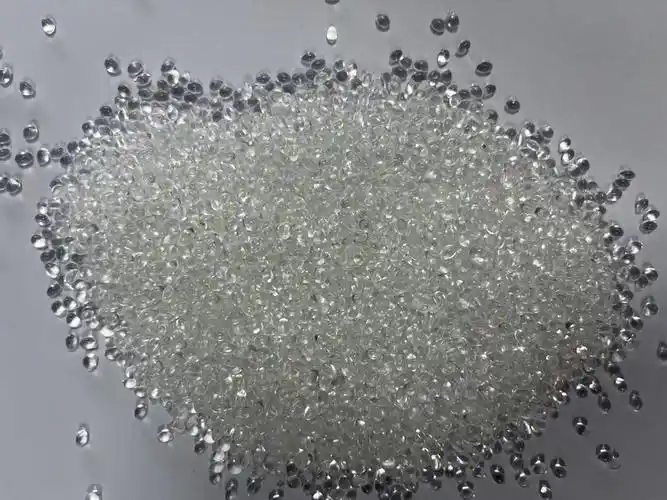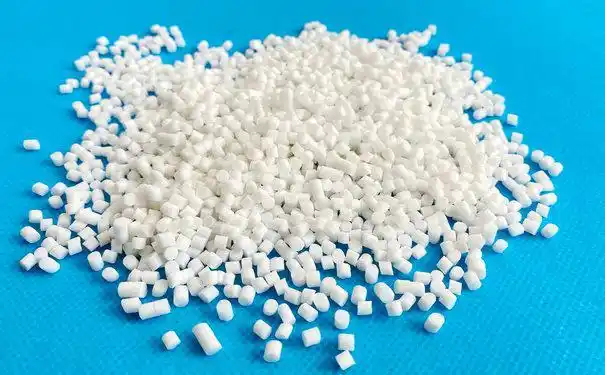As someone who’s been knee-deep in the elastomer industry for over a decade, I’ve watched Thermoplastic Rubber (TPR) become a cornerstone material for countless applications, from shoe soles to medical devices. If you’re reading this, you’re likely trying to pin down the cost of TPR raw materials per ton, whether to plan a production run, negotiate with suppliers, or keep your business competitive. Drawing on my experience and the latest market insights, I’ll walk you through the current pricing landscape for TPR in 2025, break down what drives these costs, and share practical tips to help you source smartly. Let’s get started.

What Is TPR and Why Its Price Matters
TPR, or Thermoplastic Rubber, is a game-changer in manufacturing. It blends the stretchy, resilient qualities of rubber with the moldability of thermoplastics, making it a favorite for products that need flexibility and durability. Think of the grippy soles on your running shoes, the soft handles on your tools, or the seals in your car’s engine—TPR is often the unsung hero behind them. Its ability to be processed like plastic while performing like rubber keeps it in high demand across industries like footwear, automotive, and healthcare.
Knowing the cost of TPR per ton is crucial because it directly impacts your project’s budget and profitability. Prices fluctuate based on raw material availability, global demand, and even logistics hiccups, and understanding these factors can save you from overpaying or choosing subpar materials. Let’s dive into the numbers and see what’s shaping the market in 2025.
Current TPR Price Range in 2025
From my recent dealings with suppliers and market data, TPR raw materials in 2025 generally cost between $1,470 and $2,250 per metric ton. This range varies depending on the TPR grade, supplier location, and order size. For example, basic TPR grades used for everyday applications like shoe soles hover around $1,470–$1,800 per ton, while premium grades for specialized uses, like medical tubing or automotive seals, can climb to $2,100–$2,250 per ton.
Here’s a snapshot of how prices break down by TPR type:
|
TPR Type |
Price Range (USD/ton) |
Primary Applications |
Key Properties |
|---|---|---|---|
|
SBS-based TPR |
$1,470–$1,800 |
Shoe soles, grips, toys |
Cost-effective, elastic |
|
SEBS-based TPR |
$1,800–$2,100 |
Medical devices, outdoor gear |
UV-resistant, soft-touch |
|
High-performance TPR |
$2,100–$2,250 |
Automotive seals, industrial parts |
Durable, chemical-resistant |
These are global averages, but prices can shift based on where you’re sourcing from. For instance, suppliers in China often offer lower prices due to high production volumes, while costs in Europe or North America reflect added logistics and regulatory expenses.
What’s Driving TPR Prices?
Over the years, I’ve seen TPR prices ebb and flow due to several key factors. Here’s what’s moving the needle in 2025:
1. Raw Material Costs
TPR is made from styrene-butadiene-styrene (SBS) or styrene-ethylene-butylene-styrene (SEBS), blended with resins like polypropylene (PP) or polystyrene (PS). The cost of these inputs, especially ethylene and styrene, heavily influences TPR prices. In 2023, a drop in crude oil prices lowered ethylene costs, which brought TPR prices down temporarily. In 2025, however, styrene price volatility has kept the market unpredictable, with occasional spikes pushing TPR costs up.

2. Supply and Demand Dynamics
Global demand for TPR is tied to industries like automotive, particularly electric vehicles, which use TPR for seals and gaskets. In Asia, high production keeps supply steady, holding prices down, while weaker demand in sectors like construction—hit by high mortgage rates—can soften prices. I’ve noticed that when automotive demand surges, like it did in China in late 2024, prices stabilize or inch up slightly.
3. Logistics and Supply Chain
Shipping disruptions, like those in the Red Sea in 2023, can inflate TPR costs, especially for importers in Europe or North America. While 2025 has seen some logistics stabilization, port congestion or freight cost spikes can still add 10–20% to prices. I’ve helped clients cut costs by sourcing locally or timing orders to avoid peak shipping seasons.
4. Supplier and Order Volume
The supplier you choose and the size of your order can make a big difference. Large manufacturers, like Xiamen Keyuan Plastic Co., quote TPR at $1,400–$2,100 per ton for bulk orders (1–20 tons), while smaller orders or specialty grades might cost $2–$5 per kg. In my experience, negotiating with verified suppliers on platforms like Alibaba can yield better rates, especially for orders over 5 tons.
Regional Price Variations
Having worked with clients across continents, I’ve seen how TPR prices differ by region:
Asia (China, India): Prices range from $1,400 to $1,900 per ton, driven by high production and access to raw materials. China’s oversupply, with styrene inventories at 31,900 tons in December 2024, keeps prices competitive.
Europe: Expect $1,600–$2,100 per ton, reflecting import costs and stricter environmental regulations. Low demand in 2023 softened prices, but 2025 shows recovery signs.
North America: Prices mirror Europe, at $1,600–$2,200 per ton, with steady automotive demand supporting stability. Logistics costs, like Houston warehouse congestion, can add to expenses.
Strategies to Get the Best TPR Deals
Through years of sourcing TPR, I’ve picked up a few strategies to help clients save money without sacrificing quality:
Compare Suppliers: Platforms like Made-in-China.com and Alibaba list verified suppliers with competitive pricing. For example, Suzhou Topo New Material Co. offers TPR at $1,285–$1,450 per ton for orders over 3 tons, while smaller batches might cost $2–$4 per kg.
Negotiate Bulk Discounts: Ordering 10–20 tons can lower costs by up to 15%. I once helped a footwear company save $4,000 by consolidating their order with a single supplier.
Stay Informed on Trends: Use resources like Procurement Resource to track TPE/TPR price trends. They predict stable prices in Q4 2025, with potential softening if construction demand remains weak.
Source Locally: Importing can add significant costs, so explore regional suppliers. In the US, distributors like Thomasnet list TPR options that avoid high shipping fees.
Prioritize Quality: Cheap TPR, as low as $800 per ton, is often recycled or low-grade, which can fail in demanding applications. Always request samples and certifications like ROHS or ISO 9001.

TPR Applications and Cost Considerations
TPR’s versatility makes it a go-to material, but its cost impacts budgets differently depending on the use case:
Footwear: SBS-based TPR at $1,470–$1,800 per ton is perfect for shoe soles due to its elasticity and traction. A small factory producing 8,000 pairs monthly might spend $4,000–$6,000, factoring in waste.
Medical Devices: SEBS-based TPR, costing $1,800–$2,100 per ton, is valued for biocompatibility. A medical tubing producer might budget $9,000 for a 5-ton order, prioritizing safety and performance.
Automotive: High-performance TPR at $2,100–$2,250 per ton is used for durable seals. A mid-sized supplier might allocate $18,000 for an 8-ton batch, balancing cost with reliability.
In my experience, choosing the right TPR grade—whether for flexibility, UV resistance, or chemical stability—ensures you don’t overspend on features you don’t need.
Sustainability and Future Price Trends
The industry’s push toward sustainability is reshaping TPR’s landscape. While TPR is recyclable, its petrochemical base has spurred interest in bio-based alternatives, which cost 10–20% more but align with eco-friendly goals. In India, sustainable TPR production is gaining traction, potentially impacting global prices in the coming years.
Looking to 2026, I anticipate TPR prices will remain stable unless crude oil or styrene markets face major disruptions. The automotive sector’s growth, especially in electric vehicles, will likely sustain demand, while advances in recycled TPR could lower costs for certain grades.
Final Thoughts
Navigating the TPR market doesn’t have to be daunting. With prices ranging from $1,470 to $2,250 per ton, you’ve got options to fit various budgets. The key is to match the TPR grade to your application, compare suppliers, and keep an eye on market trends. Whether you’re crafting consumer goods or industrial parts, smart sourcing can save you thousands while ensuring quality.
If you’re ready to buy, check platforms like Alibaba or consult reports from Procurement Resource for the latest insights. And don’t cut corners on quality—reliable TPR delivers better performance and customer satisfaction. Have questions or need sourcing tips? Drop a comment, and I’ll share what I’ve learned from years in the trenches!

Related Questions and Answers
Q: Why do TPR prices vary so much between suppliers?
A: Prices differ due to TPR grade, order volume, and supplier location. Bulk orders in China might cost $1,400 per ton, while specialty grades in Europe can hit $2,100 per ton. Compare quotes and request samples to ensure quality.
Q: Is recycled TPR a good way to save money?
A: Recycled TPR can cost as little as $800 per ton, but it’s often lower quality, suitable for non-critical uses like budget shoe soles. For high-performance needs, opt for virgin TPR with certifications like ROHS.
Q: How can I predict TPR price trends for 2026?
A: Monitor raw material costs (e.g., styrene, ethylene) and demand from industries like automotive. Procurement Resource forecasts stable prices in 2025–2026, with potential dips if supply outpaces demand.
Q: Are there cheaper alternatives to TPR?
A: TPE-S or TPU can be alternatives, with prices from $1,200–$2,000 per ton. They offer similar flexibility but differ in performance. Consult suppliers to match materials to your project’s needs.
Q: How do logistics affect TPR costs?
A: Shipping can add 10–20% to prices, especially for imports to Europe or North America. Local sourcing or bulk orders can cut costs. For example, a 15-ton order from Asia might save $2,000 in freight.





